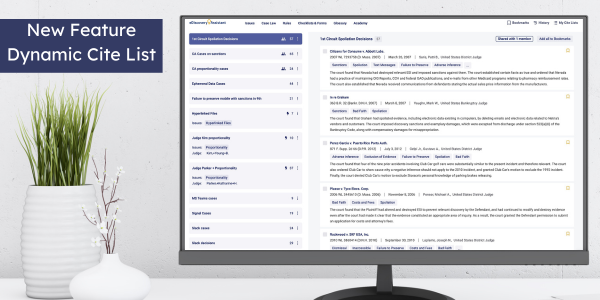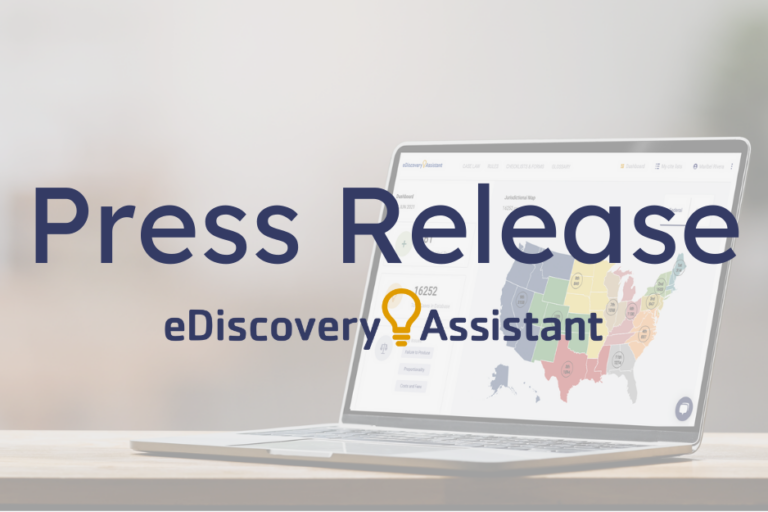Email threading is one simple approach to streamlining your eDiscovery.
Almost every event I attend has a session on eDiscovery analytics. And with good reason — when you’re facing a database of several thousand to millions of documents, you need ways to figure out what’s there without reviewing every single document. Let’s face it, that’s pretty much every case these days. I’m not talking about the big ones, I’m talking about every. single. case. A single .pst or hard drive can contain thousands of documents. The volume of data being created by users can mean you have a significant database even with very targeted collection efforts.
Analytics are all ways to help you look at the relationships between the data or terms or concepts you select that narrow the data set to something manageable. They come in many forms and many cost points, and we’ll start to look at the various forms in future articles. One of the best analytics tools is email threading. If you aren’t using it, you’ll want to start. And the best part about email threading? It’s FREE.
What is email threading? Email threading groups a string of related emails together in a chain. For example, if I send a message asking for agenda items to four people, and all four respond individually, all of those messages will create a chain of emails, or a thread. A thread includes the original email and all responses and even forwarded emails.
One of the biggest challenges with reviewing data is that when you log into a database, it’s just one big pile of documents. And that scares the crap out of most lawyers and keeps them out. But tools like email threading help you start to make sense of the morass when you look at the data and see how custodians communicate, with whom and about what. As I’m fond of saying, if you leave reviewing the data to the non-lawyers, you are not doing your job to know the facts and create an effective strategy.
So how can you use email threading? Let me count the ways. Here are a few to get you started. As always, I encourage you to think about what you are looking for, and how you can use email threading to zero in on it or to get rid of the noise in your collection. testing
- Culling out unresponsive data. Culling starts with diving into the data and seeing what’s there. A good example to use are emails about going to lunch. (As a side note, I strongly encourage you to get your users to exchange communications about lunch in IM instead of email.) A quick search for emails about “lunch” (keyword, in the title, etc.) will pull up many, many emails. Open one and then view the email thread — the list of all emails on that thread. You can quickly look at those emails and then cull the entire thread by marking it non-responsive, culling it from your data set, etc. Ask your PM how to do that if you don’t know, or have them create a quick guide with screenshots to keep at your desk. By using email threading, you can eliminate hundreds or thousands of emails very quickly. We use email threading in our reviews to keep costs down by eliminating the need to review threads that have no value.
- Understand the relationship between parties and the tone of communications. The benefit of email threading is that it allows you to see the conversation as it happened chronologically, with spin-off communications included. It’s a helpful window into the context of the information. When analyzing the threads between particular parties you can actually get a sense for the relationship with the tone and language used in the back and forth communication. This becomes even more apparent when you pay attention to the difference in tone between internal communications (between folks at your client for example) and external ones (at the opposing party). It can also be apparent in hierarchical exchanges. I’ve seen information exchanged at a lower level that is left out of the ultimate communication with the C-suite member. And that knowledge can be imputed. If the C-suite member is making the call and doesn’t have all the information, that can skew the decision and the facts of your case. Is the C-suite member on the same email thread? Or did the ultimate communication about the issue come in a separate message without all the details? Study the threads on your key issues.
- Determine whether a specific person knew about an event. Knowledge is always a key element in many theories of liability and you know how I feel about deciphering data based on what you need to show the elements for each theory. Email threading lets you find the discussion on a topic and then see who all received it.
- Find the subject change. How many times has an email exchange taken a completely different turn from the original subject, but no one changes the subject line? We’ve found some of the most important emails in cases that were buried in a thread. Search terms and other analytics like clustering can help you find the key concepts, then you can follow the conversation using the email thread.
Tessa Jacob, who leads Husch Blackwell’s eDiscovery Solutions Team, says she’s seen as much as a 50% reduction in the number of emails that need to be reviewed using email threading. Tessa also passed along her best tech tips for using email threading:
- In some cases, the reduction is much smaller because of irregularities with the data that makes the system think the data is unique when it is not. Use near duplicate technology to further analyze this data set for efficiency.
- Be careful when you use date restrictions in combination with threading. Date restrictions applied after or in combination with threading can cause you to miss emails. The system identifies inclusive emails by content. Searching for email metadata fields by a specific date or “on or before a specific date” can cause unique issues since you cannot find them in the inclusive email set because they have been suppressed by threading.
- Don’t forget to review “stand-alone” emails — those emails that have no threads in your data set. They will not usually be identified in your inclusive email field as Yes or No and they are easy to miss.
- Include a Review Status field in your required coding fields, and mark non-inclusive families as unreviewed. That identifies documents that you purposely did not review and not just ones that were accidentally skipped.
Most review tools these days include email threading as part of their core offering, but you want to check and if you don’t have it, get to a tool that does. We use email threading in combination with other analytics and separately depending on the case. And while many talking heads have poo-poo’ed email as the thing of the past, we are still seeing copious amounts of it and think we will for years to come. That being said, as other forms of communication move into the spotlight (i.e. instant messaging), I am confident that threading tools will be just as valuable — the question is whether those forms of communication will allow us to leverage them.
An earlier version of this article first appeared on Above the Law.





